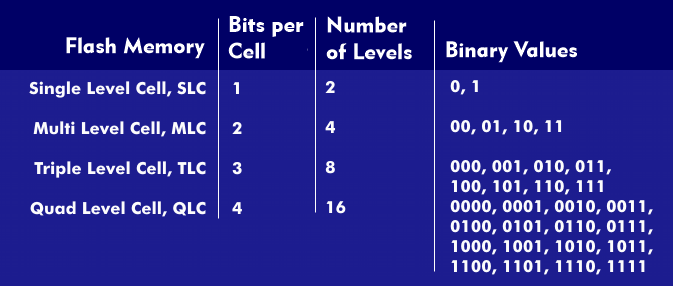quadruple level cell (QLC)
The Quadruple Level Cell (QLC) is a flash memory with an enormously high storage density. The storage density is twice as high as that of the Triple Level Cell( TLC), four times as high as that of the Multi Level Cell( MLC) and eight times as high as that of the Single Level Cell( SLC).
While a Single Level Cell (SLC) operates with two different voltage levels and can store two bits, namely 0 and 1, a Quad Level Cell (QLC) operates with 16 different voltage levels and can store 16 binary values. In order to exclude errors and misinterpretations as far as possible, the voltage values must be maintained extremely precisely because there are only the slightest voltage differences between the individual binary values - for example between 0010 and 0011.
Flash memories are based on a floating-gate transistor. The charge on the floating gate corresponds to the binary value. The memory cells can be constructed in two dimensions as NAND flash using planar technology, or in three dimensions as 3D NAND memory at higher storage density, as with the QLC cell.

